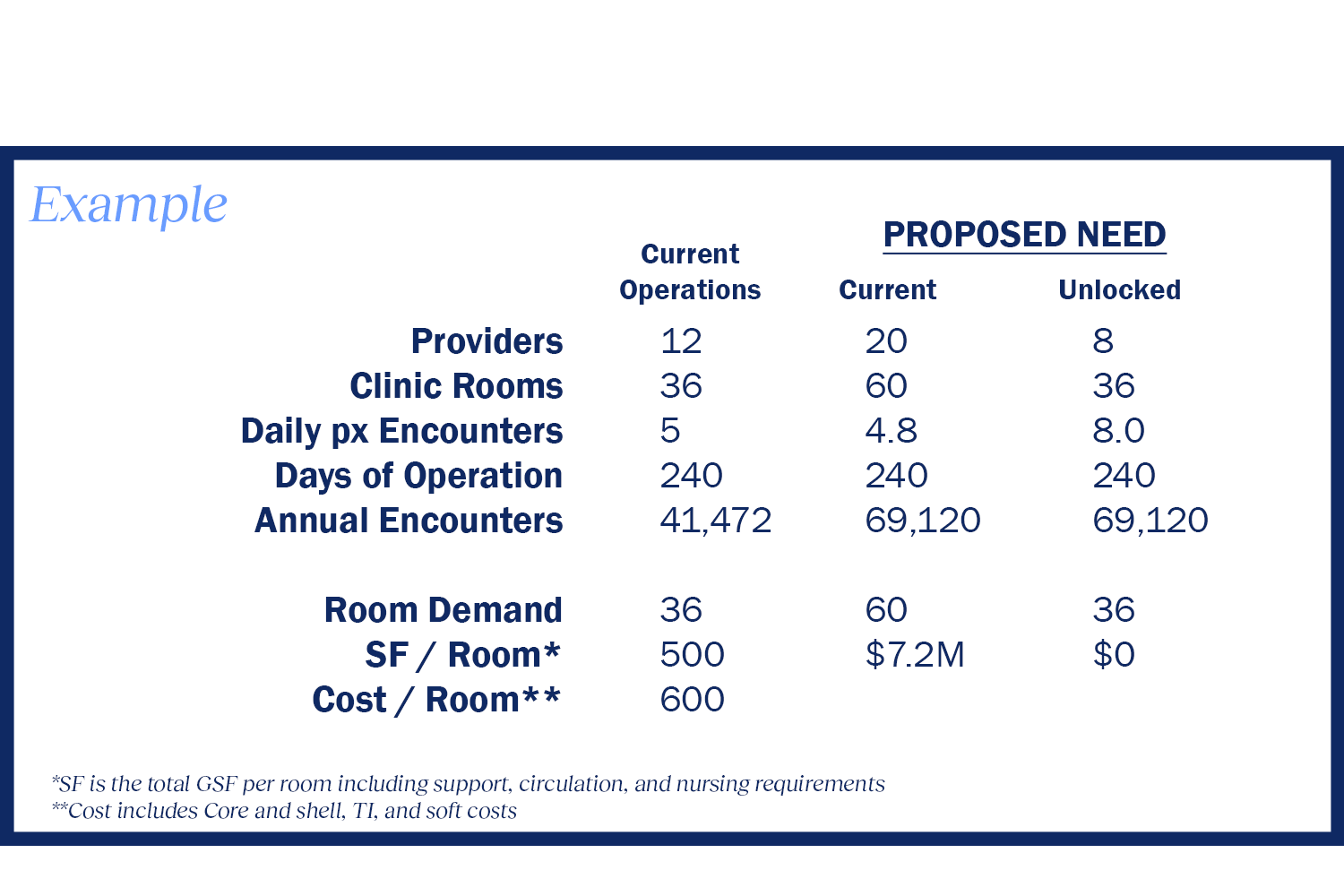Unlocking Latent Capacity: A Smarter Approach to Space Utilization in Healthcare Facilities
Unlocking latent capacity is one of the highest ROI opportunities available to healthcare systems. It allows you to maximize revenue in the facility and ensure that the capital investment is “right-sized” for the actual demand.
By Michael Romano, Principal, Advisory Services, Hammes Healthcare
Nearly all healthcare providers face the challenge of balancing patient access with space constraints whether in a hospital, emergency department, surgical suite or ambulatory environment. “We are bursting at the seams” is a constant refrain. Oftentimes, however, space constraints are only part of the underlying problem; instead, operational inefficiencies, poor patient flow design, underutilized scheduling practices, all contribute to patient access challenges. In other words, the question of “How much more space do I need?” should start with “How can I unlock latent capacity and optimize the space I already have?”
The choice to include the evaluation of latent capacity in the beginning of a space planning discussion can help avoid two potential “bad outcomes.” First, in the absence of understanding, a new facility could be oversized for the inefficiencies of the current operations. And with construction costs rising dramatically, the financial implications of overbuilding are greater than ever. Second, and perhaps more importantly, unused capacity drives up operating expenses by requiring additional FTE support in underutilized space. While this cost may be hard to see, it has a direct impact on each month’s financial performance.
The Hidden Cost of Inefficiency
Consider the following: a healthcare system is considering the expansion of a large ambulatory facility to accommodate newly recruited providers due to feedback that the existing facility is “at capacity.” The feedback is based on the current throughput in which each physician requires three exam rooms: 12 providers, 36 rooms, and we are full. A closer examination of the data found that patient throughput per room was less than five patients per day. By implementing a modest industry standard goal of eight patients per room per day, the healthcare system could house eight new providers, and accommodate more than 27,000 additional patient encounters without building additional space. By contrast, building new space to house the eight new providers could cost an estimated $7.2 million.
In this scenario, there wasn’t a need for new buildings to accommodate new physicians, but rather a need to reallocate rooms based on patient throughput rather than the number of providers. The healthcare system could save its scarce capital dollars for other projects.

Why a Design-First Approach Falls Short
Some organizations adopt a “design-first” mindset. They ask: “How much space do you need?” and then they design and build it. While intuitive, this approach often overlooks how space is actually used. In the absence of including the operational analysis, design decisions are based on assumptions rather than performance metrics, resulting in facilities that may be shiny and new, but are oversized and create additional (and unnecessary) operating expense.
Instead, a better approach starts with asking: Is there latent capacity in our current facilities? How much improvement can be achieved? How will that impact the need for new space?
An Alternative Way Forward: Operationally Focused, Data-Driven Planning
Before considering a new facility or an expansion to your existing space, dig into the data. Through detailed space planning, time utilization studies, workflow analysis, and intelligent application of technology, you can uncover the root causes of inefficiency and optimize accordingly. This operational approach enables healthcare systems to:
- Improve patient throughput by aligning staffing, scheduling, and room utilization
- Maximize space utilization for flexibility in future service line growth
- Design smarter, leaner facilities that scale with actual demand
- Integrate technology and innovation seamlessly into the patient experience
The Bottom Line
Space alone isn’t a valuable asset—efficiently used space is.
Unlocking latent capacity is one of the highest ROI opportunities available to healthcare systems. It allows you to maximize revenue in the facility and ensure that the capital investment is “right-sized” for the actual demand. Additionally, health systems can ensure that capital is spent efficiently on projects that enhance provider and patient satisfaction.
So, before you build, look inward. Understand what your current space can do when it’s optimized. Fix the inefficiencies. Then, and only then, should you consider building something new.
The future of healthcare isn’t about having more space. It’s about making the most of the space you already have.
Michael Romano is a Principal with Hammes Healthcare’s Advisory Services practice. He has over 30 years of experience working with healthcare providers to help them expand access, enhance their strategic position in the markets they serve, and improve operations and patient experience. Michael has written and spoken on the impact of emerging healthcare trends to health system boards, large physician groups, national trade associations, state legislatures, and two United States congressional committees.